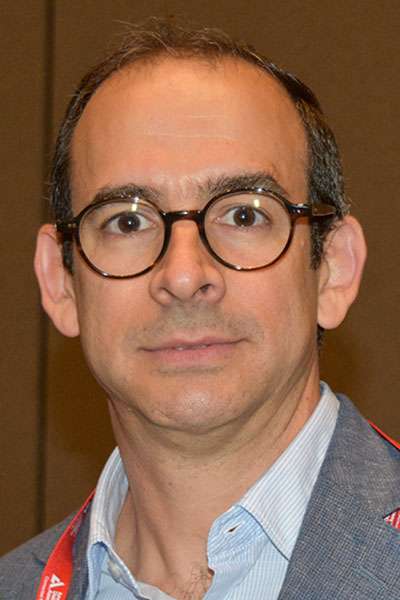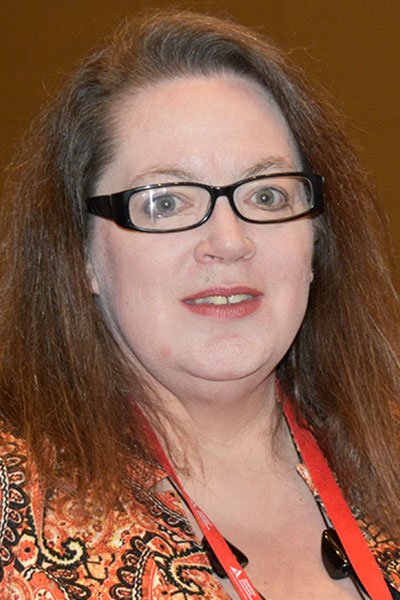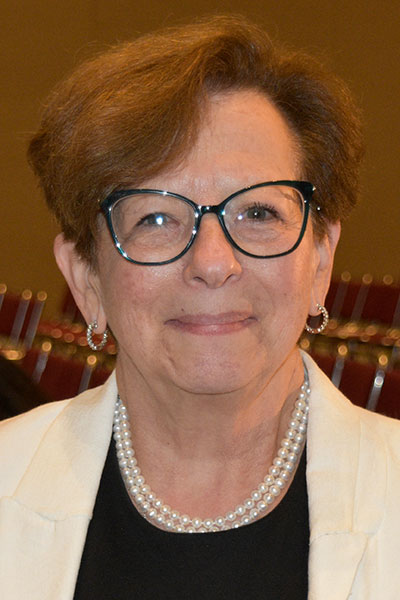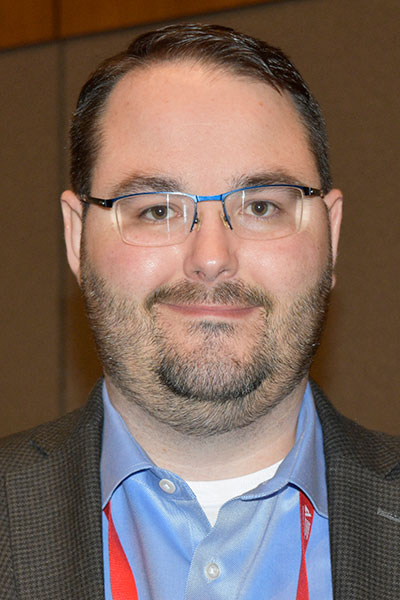While guidelines and standards of care are helpful for many, some populations require more individualized approaches to the treatment of diabetes, as panelists shared in Interactive Case Studies—Optimizing Diabetes Technology in Special Populations. The Ask the Expert session can be viewed by registered meeting participants at ADA2023.org. If you haven’t registered for the 83rd Scientific Sessions, register today to access the valuable meeting content through August 28.
Continuous Glucose Monitoring with Chronic Kidney Disease

Galindo, MD
Data from Kidney Disease: Improving Global Outcomes (KDIGO) concluded that the accuracy and precision of A1C measurement declines with advanced chronic kidney disease (CKD), particularly among patients treated by dialysis, explained Rodolfo J. Galindo, MD, Associate Professor of Medicine, University of Miami. Continuous glucose monitoring (CGM) could provide new insights to improve measurement data.
Dr. Galindo’s research has found that compared to capillary blood glucose, which is widely used, CGM provided a comprehensive glycemic evaluation in insulin-treated subjects with type 2 diabetes on hemodialysis. CGM assessed time in range, detection of severe hyperglycemia, and hypoglycemic excursions more accurately.
Additional research analyzing the impact of hemodialysis (HD) on glucose levels through CGM showed that CGM patterns reflected improved glycemic control during dialysis, with a tendency for higher glucose metrics before HD. Hypoglycemia metrics were low, while severe hyperglycemia excursions were common across all HD-related periods. Future studies are recommended employing newer CGM technology and an extended period of CGM monitoring for subjects with type 2 diabetes treated by HD.
“CGM is not about one value before breakfast anymore,” Dr. Galindo said. “It’s about patterns, trends, ratio changes, and tendencies.”
Low Vision and Hearing Loss

CRC, CDCES
As a Diabetes Specialist at the Texas Workforce Commission, Lisa Golden, MAEdHD, CRC, CDCES, helps patients with low vision or hearing loss to optimize the technology they use for diabetes self-management.
“The reality is that our diabetes technologies are, at best, about 60% accessible,” Ms. Golden said.
She uses workarounds to align the technology with the skills of her patients, but this is not the same thing as accessibility, she explained.
To improve the experience of navigating this technology for patients with low vision, screens with customizable brightness settings are often helpful. Displays that can zoom or provide audio descriptions also make these patients’ self-management easier.
For patients with hearing loss, Ms. Golden emphasized the necessity of a certified medical interpreter for conversations with their care team.
“When somebody has language or literacy barriers or a vision or hearing issue, then it can be more challenging if somebody isn’t really fluent in American Sign Language or any other language,” she said.
For patients with either impairment, features like flashing lights or vibrations on their cellphones can replace alarms or other alerts. However, Ms. Golden said some patients find this more annoying than helpful because there’s currently no differentiation between the notifications they receive and they often begin to ignore them.
Still, cellphones are a beneficial tool for these populations because Android and iOS devices have an array of accessibility features that diabetes technologies often lack. Clinicians need to help these patients find the optimal settings for their devices if needed because data from wearables, glucose monitors, and other technologies can be integrated into their phones, Ms. Golden noted. Once patients are educated on how to use the technology, they still need the freedom to customize their settings to their preferences.
“I avoid using caregivers for assistance, especially family members,” she said. “While they’re well-intentioned, they often will do what is best for them or what they think to be the right thing instead of allowing for independence.”
Loss of Dexterity

Kruger, MSN,
APN-BC, BC-ADM
Manual dexterity is typically stable until approximately 65 years of age. Carpal tunnel syndrome, arthritis, peripheral neuropathy, and other conditions that often develop with aging can make it difficult for patients with diabetes to measure their glucose levels or administer insulin, said Davida F. Kruger, MSN, APN-BC, BC-ADM, Certified Nurse Practitioner, Henry Ford Health System.
This is especially concerning due to the aging domestic population.
“In the United States, the current growth of the population 65 years and older is one of the most significant demographic trends,” she said.
Nearly one-quarter of Americans will be 65 years or older by 2060, and over one-quarter of people older than 65 already have diabetes, a number expected to increase in the coming decades. Ms. Kruger said among patients with type 1 diabetes for 30 years or more, 48% have dexterity issues.
Progress toward solutions has been slow, she noted, adding that it is incumbent upon providers to learn about the ins and outs of glucose monitors, glucose meters, pumps, and other tools on the market to calibrate their recommendations based on a patient’s needs.
“Patients should not need to give up technology as they age,” she said.
She also said the loss of dexterity could require more support and assistance for patients as they wait for more accessible devices to become available. This can be counter-intuitive because many people are initially taught to be self-reliant in managing their care.
Intellectual Disabilities

BSN, RN, CDCES
The Standards of Care in Diabetes from the American Diabetes Association® says diabetes technology should be tailored to individualized needs and that it’s the physician’s role to provide ongoing education as necessary for updates or new features. These principles are even more relevant while working with patients with intellectual disabilities, according to Nicholas R. Galloway, BSN, RN, CDCES, Coordinator of Diabetes Education, University Hospitals.
Mr. Galloway said care assessments and planning with patients who have intellectual disabilities do not vary much from his approach with other patients. First, a provider must understand the patient’s historical risks of self-management and any past incidences. Next, the clinician should gather information to understand how the technology will affect the patient’s routines, discuss their preferences, and review their (or their caregiver’s) capabilities to manage the technology.
“A running theme is making adjustments, being flexible, finding solutions that work—and sometimes they don’t work—and trying to find new alternatives,” he said.